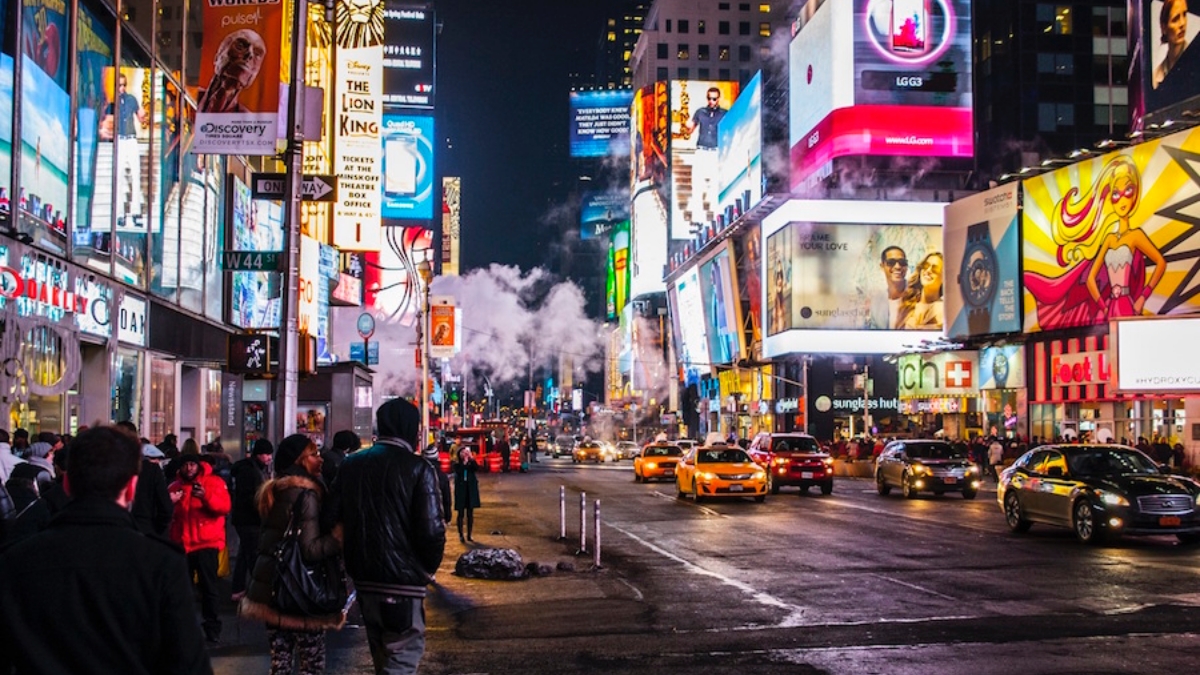
In this digital age, many marketers mistakenly believe the secret to conversion solely lies on the Internet. They miss out on traditional media that still work.
Table of Contents
1. Billboards
One of the most iconic billboards in the United States is the Camel billboard in Times Square. For the first time, Americans got a treat of animation as the male character spewed smoke. Since then, these signage types have figured themselves in major thoroughfares and busiest tourist and business districts in the world.
But do they still work? In a 2009 in-car study, at least 70% of commuters looked at billboard messages. Nearly 60% revealed that they learned about a restaurant or an event by seeing the roadside billboards.
Although the study is over 10 years old and much may have changed, it’s still likely that people still read these big signs.
First, traffic can still be horrendous, especially during rush hour. In this period, the kilometers traveled by a vehicle significantly drops. Couple that with laws about distracted driving, and often, people sometimes lack other options to entertain themselves besides looking at their surroundings.
Second, billboards can enjoy high impressions in crowded places. Times Square, for example, welcomes at least 50 million tourists each year. Even if only 5% of the group looks at the billboard, that still translates to 2.5 million impressions.
Further doing the math, let’s pretend that out of this 5%, a billboard converts only 2% and probably buys a product worth $5. In a given year, that billboard helps the company generate at least $250,000 in revenues.
2. Vehicle Stickers and Decals
Companies can also maximize their vehicles by making them moving advertisers. Some data suggest that the conversion rates of vinyl decals and stickers and car wraps can reach over 60%.
They may even be more effective than billboards, which cost more money. One can already buy a decal for less than $20.
Why do vehicle stickers and decals work?
a. Vehicles are dynamic advertisers
They can bring the brand to plenty of places that may be rich in underserved or unreached markets.
b. They can contain several essential pieces of information
These decals and stickers can include the company name and their contact details. They may also publish the office address and the areas covered by their services. This makes it easier for potential customers to ask questions or book a service.
c. Decals give the best value for money
They help generate lots of impressions—imagine how many can see the ads in a day—for a low cost. It’s one of the most cost-effective offline marketing strategies.
3. Promotional Products
There’s a good reason companies still give promotional products whenever they can be it in trade fairs or during holidays: they have some of the highest conversion rates.
Unlike other marketing materials like billboards and decals, recipients can keep the products. In fact, some surveys say that 80% of consumers own up to 10 promotional products. At least 50% of those who have one use it once a week.
Promotional products are less likely to end up in the trash, unlike flyers and brochures. One of the possible reasons is these items are more tangible. Consumers don’t only get to see them but also hold and interact with the object.
In another research, these giveaways can promote customer loyalty or generate more sales and leads. Before they received these promotional products, about 55% of the recipients already interacted with the brand. The percentage rose to 85% after they had the freebie.
One, companies can ask for customer details in exchange for the freebie. These can include a name and an email address, which what the business needs for e-mail marketing.
Second, these items can be an excellent source of referrals because recipients can use them. A bag, for example, can generate hundreds to thousands of impressions for the business.
4. TV Ads
To say that TV ads are expensive is an understatement. A Super Bowl ad cost a whopping $5.5 million for a 30-second spot, and that’s even when the United States is still in the middle of a pandemic.
Moreover, the price was also more than twice what advertisers used to be over a decade ago. In 2002, the average cost was only $2.2 million.
Outside of the Super Bowl, a few-second ad that runs on national TV could already mean spending at least $60,000. A local ad may be cheaper, but that’s still worth thousands.
So why bother advertising in this medium? Many are still watching television despite the growing popularity of online streaming sites such as Netflix.
In a Nielsen report shared by Statista, television remains the most-used electronic medium in the country among adults. Most Americans between the ages of 18 and older spend at least four hours each day watching television.
Marketers still need to weigh the most cost-effective offline marketing strategy that can give them the highest conversion. But the message is clear: there’s no reason to dismiss these traditional media just yet.
Meta title: Traditional Media that Marketers Should Not Ignore
Meta desc: While online marketing is the trend these days, marketers should still not put traditional advertising options on the side. Here are four of the traditional advertising strategies that still work today.